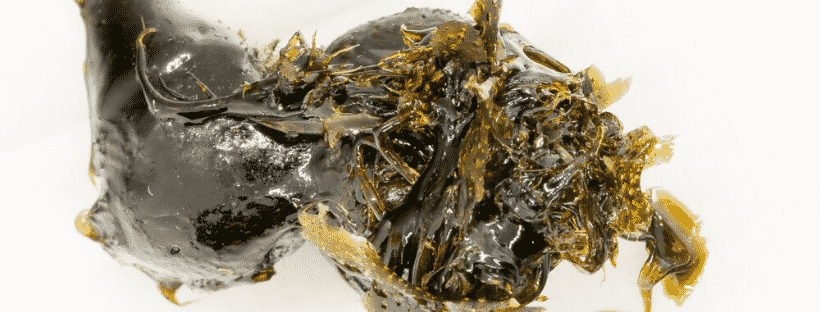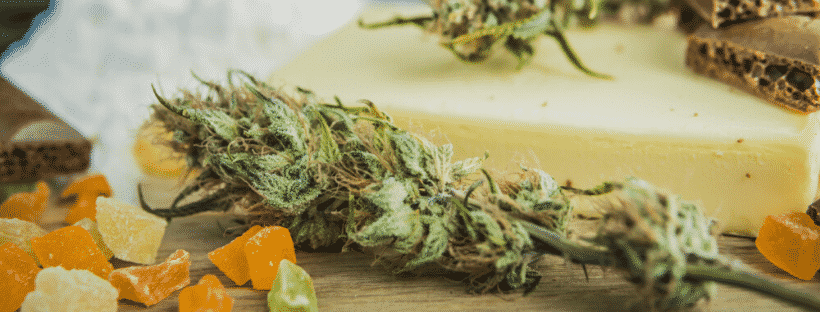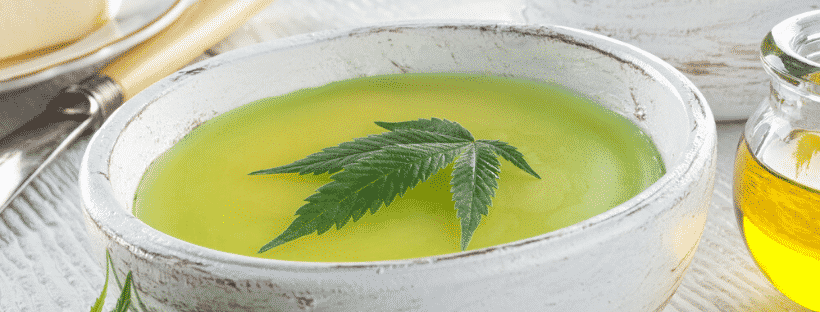One of the many popular ways of ingesting weed is by using edibles. This way, you can get the desired effects of marijuana while also enjoying a delicious food item. Edibles are also a great option for those who do not like the action of smoking or prefer to avoid the harshness on the lungs associated with it.
You could buy edibles or make your own, depending on your preference. If you plan to make your own weed edibles, then keep these tips in mind.
Reasons to Make Your Own Edibles
Price
Making edibles at home tends to be more affordable. It also gives you the ability to completely customize your food items as your creativity and cooking skills are the limit with edibles.
Dietary Restriction
Homemade edibles are also appealing for those who have dietary restrictions or allergies, as you can control exactly what goes into the item.
Complete Cannabis Customization
With a homemade edible, you can also control everything regarding the cannabis that you use. You can opt for a high-quality bud of the strain that you prefer and control the dosage. This lets you customize the effects that you should expect from consuming the edible.
What Cannabis Adds to Your Food
Creating edibles does more than just give your food item the ability to make you high. If you choose to make your edible using the entire bud or flower instead of a concentrate or extract, you will also get the nutrients found in the leaves and flowers of the cannabis plant. These include vitamins, minerals, antioxidants, protein, and fiber.

Decarboxylation Is Necessary
Remember that if you want to make an edible as a way to get high, then you need to ensure that you decarboxylate the cannabis. Otherwise, your body will not be able to absorb the THC, and you will not get high.
Understand Decarboxylation
When raw, cannabis contains THC-A, a substance that does not get you high. When you heat cannabis, this causes decarboxylation that activates the cannabinoids. In more scientific terms, decarboxylation removes the additional carboxyl group (which is OOCH) on the end of the chain of the cannabinoids. This removal allows the cannabinoids to bind with your body’s receptors.
To put it simply, unless you heat up your cannabis at some point, it will not be able to get you high.
How to Decarboxylate Cannabis
To decarboxylate your marijuana, grind your bud lightly and then bake it at about 240 degrees Fahrenheit for between 30 and 40 minutes. Take a few seconds to stir the bud around at approximately 10-minute intervals, as this will help maximize the surface area of the bud that you activate.
If you need to finish this step more quickly, you can instead put the oven at 300 degrees Fahrenheit and cook the cannabis for between 10 and 18 minutes while stirring it each five minutes. However, this may be less effective and puts you closer to the temperature at which the cannabis begins to degrade, which could potentially ruin your high.
The amount of time it takes for decarboxylation will depend on the strain and strength of the weed. You want the weed to be golden brown in color when you are done.
Be sure to let your decarboxylated marijuana cool down before you use it in your recipe. You will also likely want to grind it down a bit more before using it, which you can do in a food processor.
You Can Decarboxylate Cannabis During Cooking
Some edible recipes will call for you to just decarboxylate your cannabis as you make the edible. Maybe you will just be told to put it in the pan a bit earlier. However, if you decarboxylate the cannabis first and do so separately, you are more likely to enjoy increased potency and a better taste. It is also much easier to control the temperature during decarboxylation if you turn it into a separate step. You will spend a bit more time going this route, but the results will be worth it.

The Ideal Grind
After you decarboxylate your cannabis, it is time to finish grinding it up, so you can use it in your recipe. Some people like to use a coffee grinder or a food processor since this is much easier. While this method requires less effort on your part, it also comes with some negatives. Creating a powder out of your cannabis may add chlorophyll to the canna-oil, which gives it a strong taste that is plant-like. It may also make the oil or butter appear grain or prevent you from straining out the plant material that could ruin the taste of your food.
Instead, you should aim for a coarse grind after you decarboxylate the cannabis. Do this using a hand grinder for the best results. The coarse grind will allow for effective absorption without involving any of the plant material you do not want in your oil or cannabutter.
Edibles Are More Potent Than Smoking
When planning how much cannabis to use in your edibles, remember that you will likely experience greater potency from edibles than from smoking the plant. That is because the liver converts THC to 1-OH-THC while smoking it converts it to delta-9 THC. The former of these creates a longer-lasting and more intense high.
Start Small
As such, you want to start with a smaller dose the first time you make an edible, or at least consume a smaller dose of it. Once you know how you will react, you can increase the dosage next time.
Ideally, you should start with around 5 milligrams in the portion of the edible that you consume. If you want to eat more of your edible, wait at least an hour before doing so, as this gives the cannabis time to begin taking effect.
Using Too Much Cannabis Is Wasteful
Not only do you not need much cannabis to get high from edibles, but using excessive amounts is actually wasteful. That is because it is only possible for the fats or lipids you use in cooking to bind with a certain number of cannabinoids.
The Maximum
As a maximum with most oils, do not include more than a cup of cannabis for each cup of oil you utilize. If you use more cannabis than this, you will be wasting the excess as it will not bind with the oil. Oils like coconut oil with high ratios of saturated fats are ideal. That is because the fats are able to bind with more cannabinoids.
Always Start With High-quality Cannabis
One of the most important things to know when making weed edibles is that you should prioritize using high-quality buds. Low-quality buds may contain chemicals or pesticides that could be harmful to your health. In the best-case scenario, low-quality buds will simply taste worse and be less potent. In the worst-case scenario, they may be bad for you if they contain chemicals.
To ensure you choose high-quality buds, look for a pungent aroma but avoid faint scents or hayish scents. Look for green buds and avoid those that are tan or yellow. If you are using an indica, look for tight and dense buds. If you are using a sativa, look for fluffier and light in appearance buds.

Infuse the Cannabis Low and Slow
For the best results with your cannabis edibles, make sure that you go low and slow during the cooking process. Avoid reaching 320 degrees Fahrenheit, as this is the point at which marijuana will start to degrade.
At the same time, you want to cook it as long as possible, since longer cooking increases potency. Ideally, you should keep your cannabis oil or infusion at between 160 and 200 degrees Fahrenheit.
How Cook Time Influences Cannabinoids
The time for which you cook the given recipe will affect which cannabinoids become more prominent as well as their potency. If you cook it for a shorter amount of time, expect to activate CBD and THC. If you cook it for longer, you may activate CBN, which is the cause of the common sleepy feeling.
The common theme, however, is that to maximize the potency of your edible, you should go for a longer cook time, reducing the temperature if necessary to achieve that result.
Use Water to Your Advantage
As you cook the marijuana and your edible, you want to ensure that the weed does not degrade from overheating. The simplest and most effective way to do this is by using water, adding it directly to the fat.
Conveniently, fats and water separate when they cool. This means that you can easily separate any residual water from your rich cannabutter once it cools.
How to Make Cannabutter
Although there are other ways to incorporate weed into your edible of choice, the most popular and classic option is to create cannabutter. Start by boiling a quart of water. Once it reaches boiling, add a few sticks of butter and let them fully melt. Now, you can add in the decarboxylated marijuana and lower the heat to a simmer. Make sure that your cannabis is always between 1.5 and 2 inches away from the bottom of your pan. Cook the butter on low heat for around three hours, at which point it should begin getting thicker at top.
Turn off the stove and put your mixture in a bowl that you have lined with cheesecloth. Use the cheesecloth to strain the material and squeeze out any liquid butter that remains. Let the butter cool for about an hour. Then put it in your fridge and let it chill until it gets the appropriate texture and consistency, that of a spread.
Always Strain
That last step of using the cheesecloth is a very important part of making a cannabis edible. If you fail to strain your cannabis oil or cannabutter properly, you will find yourself with some plant materials left in your oil. This can hurt the texture and taste of your final edible.
As an extra tip, do not squeeze the cheesecloth too hard as this can force some of the plant material through.

Test Your Oil’s Potency
You should also know how to test the potency of your cannabis oil before you use it in a dish. This way, you will be better equipped to create the proper dosage.
The best way to test the potency is to try a bit of the oil. Just mix a small amount, such as a quarter or half of a teaspoon in some food or a drink. See how you feel in an hour to determine the ideal dose. In the case of multi-serving dishes, some simple math will tell you how much of it to use in the entire item.
Distribute the Oil Well
Whether you make cannabutter or a cannabis-infused oil, you should always do your best to make sure it is evenly distributed throughout your edible. This means that you need to stir thoroughly. Otherwise, some bites will be weak, while others will be overpowering.
How to Bring Down the High
Because of the potency associated with edibles, as well as the fact that you may want to eat more than you should if they are delicious, you should know what to do if you accidentally consume too much and get too high.
Some experts suggest consuming foods with pinene, like pine nuts or pistachios, as pinene assists with mental clarity. The terpenes found in citric acid, like that of grapefruit, oranges, and lemons, can also help.
The Edible Options Are Limitless
You should also know that your options for making cannabis edibles are limitless. As long as it contains some sort of oil or fat, you can easily create cannabutter or cannabis-infused oil and use that in a regular recipe.
This means that you can use your cannabutter instead of regular butter in your favorite cookie or brownie recipe. Or, you can use the cannabutter to make popcorn on the stove. With some creativity and basic cooking or baking skills, you can turn almost any recipe into an edible.



